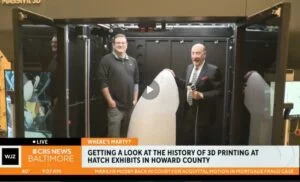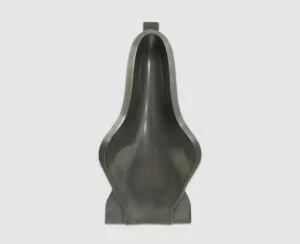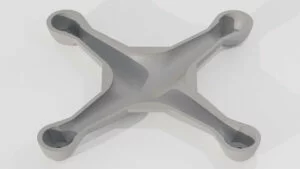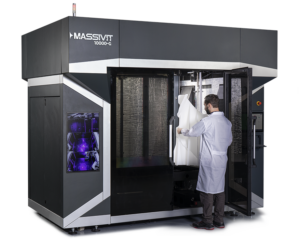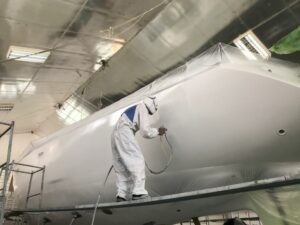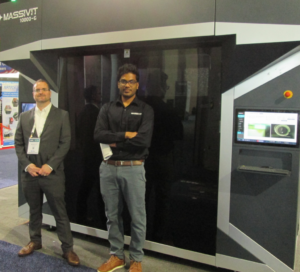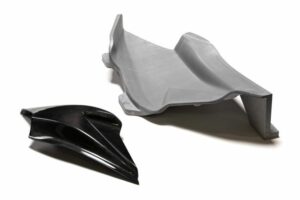In recent years, manufacturing giants like GE, Toyota, and Siemens have been partnering with academia to advance the use of 3D printing, which is also known as additive manufacturing or AM. In this article, we will explore the potential of 3D printing in manufacturing, the role of partnerships between manufacturers and academia in driving innovation, and the potential for 3D printing to enable more sustainable manufacturing practices.
The Value of Collaboration
The value of these collaborations is clear from the outset. Through a combination of creating real-world applications, establishing research institutes for 3D printing, and empowering centers of excellence, much can be learned about the potential applications in manufacturing.
Bringing together researchers from both sectors to work on projects related to additive manufacturing opens the door to discovering big insights. It allows academics and researchers from faculties such as chemistry, mechanical engineering, and computer engineering to gain access to the inner workings of new 3D printers – from understanding the power of their software, to experimenting with new and exciting materials they can print with. These partnerships allow manufacturers to access the expertise and resources of academia, while also providing academia with the opportunity to collaborate with industry and apply their research to real-world problems. There are numerous examples of partnerships between mega-manufacturers and academia. Below are some of the headliners.
Leading Manufacturing-Academia Partnerships
- GE Additive and the University of Manchester
- BMW and Tsinghua University
- Stratasys and the University of California, Berkeley
- Toyota and the University of Michigan
- Siemens and the Massachusetts Institute of Technology (MIT)
- Audi and the Technical University of Munich
Can you tell by the brand names on this list which industry has taken the lead in partnering with academic institutions? Keep that in mind and we’ll dive into it later in this blog.
If you’re wondering why these industrial titans are allocating budget for research, it’s not purely out of interest in education. Although 3D printers have been shown to accelerate students’ learning curve, and this is a long-term boon for large companies and their HR needs, it isn’t their only interest here. There are actually several business-savvy reasons why large companies are funding research on 3D printing.
Why Top Manufacturers are Funding 3D Printing Research
- To gain a competitive advantage: By investing in research on 3D printing, companies can gain a competitive advantage over their rivals by developing new technologies, products, and processes that are enabled by this technology. This could allow them to differentiate their offerings from those of their competitors and capture a larger share of the market.
- To reduce costs: By investing in research on 3D printing, companies can potentially reduce their production costs by leveraging the benefits of this technology. For example, 3D printing can enable the production of customized products on demand, which can eliminate the need for large inventories and reduce waste.
- To meet sustainability goals: By investing in research on 3D printing, companies can contribute to the development of more sustainable manufacturing processes, which can help them meet their sustainability goals and improve their environmental impact.
- To expand into new markets: By investing in research on 3D printing, companies can explore new markets and applications for this technology, which could lead to the development of new revenue streams.
Overall, global post-grad programs and universities are partnering with manufacturing giants to advance the use of 3D printing for real-world applications through a range of initiatives, including research collaborations, internships, and sponsored projects. These partnerships are aimed at fostering collaboration between academia and industry to drive innovation and progress in the field of 3D printing.
Automotive Industry Keen on AM
As you might have guessed by now, there’s a particular industry that seems to see AM as the key to unlocking a whole new lane of efficiency. That would be the automotive industry of course. Why? Because it’s an industry that is often looking to accelerate new processes and isn’t afraid to greenlight research that might help provide a boost.
Automotive manufacturers are excited about the potential of 3D printing for several additional reasons:
- Customization: 3D printing allows for the production of customized products on demand, which can be attractive to automotive manufacturers because it allows them to offer more personalized products to their customers.
- Weight reduction: 3D printing makes light work of lightweight components, which can help reduce the weight of vehicles, in turn improving fuel efficiency and reducing emissions.
- Complex geometries: 3D printing can simplify the production of complex geometries that are difficult to achieve with traditional manufacturing methods, allowing designers to push the envelope and produce more innovative products.
- Reduced lead times: 3D printing can enable the production of parts on demand, which can be attractive to automotive manufacturers because it can reduce lead times and allow them to respond more quickly to changing market conditions.
Global post-grad programs and universities are partnering with automotive manufacturing giants to propel the use of 3D printing for real-world applications through a variety of initiatives. Audi has even gone as far as to offer a dual study master’s degree. The program combines studies at Ingolstadt University of Applied Sciences or the Technical University of Munich with practical assignments at Audi.
Massivit Printers Perfect for Academic Research
The partnerships we’ve highlighted are aimed at fostering collaboration between academia and industry to drive innovation and progress in the field of 3D printing. Overall, these partnerships and the advancements in 3D printing technology have the potential to revolutionize the manufacturing industry and drive progress toward Industry 4.0.
Of course these partnerships need the tools that enable their research. We’re proud of the fact that large scale Massivit printers are playing an important role in this research. By leveraging the groundbreaking Cast In Motion and Gel Dispensing Printing technologies inherent in Massivit’s line of additive manufacturing solutions, researchers can stretch the boundaries of what they previously thought possible.
Using Massivit printers for education and research means exploring new and exciting manufacturing possibilities. These printers can produce pieces up to 6 feet tall and at 30 times the speed of traditional production methods. These are enormous factors that unlock the creativity of researchers and can change the game for the future of production as a whole.
At Massivit, we’re as excited as anyone to see what comes of these partnerships and how we can support them. If you’re interested in adding 3D printing to your research, contact us to see how we can work with you to make it a reality.





